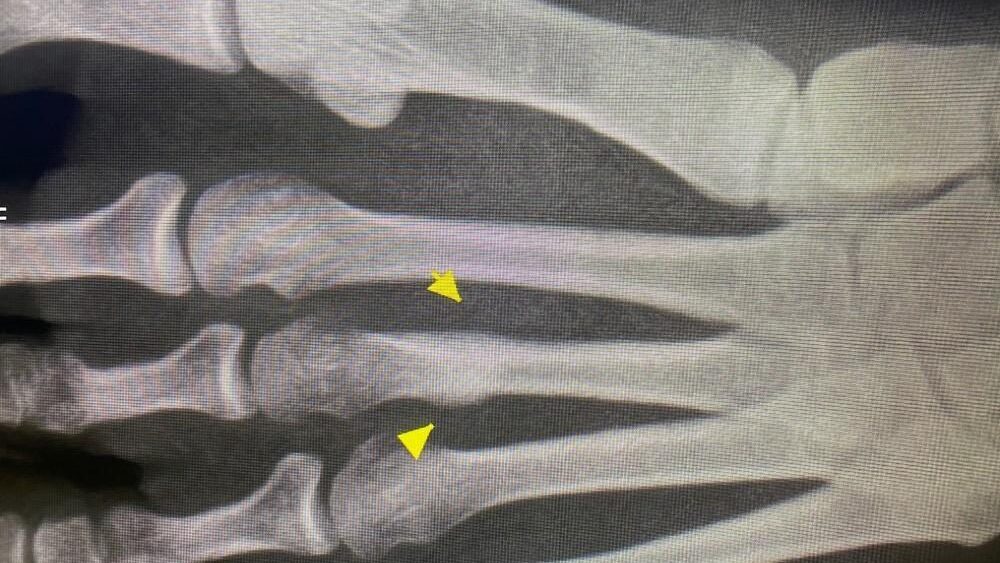Stress fractures are a common injury among athletes, runners, and anyone involved in high-impact activities. They occur when the bones are subjected to repetitive force, leading to inflammation of the bone or small fractures. While rest is a crucial component of recovery, it is often insufficient to ensure a safe return to activity. Here’s why:
The Nature of a Stress Fracture
A stress fracture, also known as a bone stress injury, is not just a simple break. It’s a microscopic injury resulting from cumulative overload. Unlike acute fractures, which occur from a single traumatic event, bone stress injuries develop over time due to repetitive stress on the bone. Repetitive stress leads to inflammation of the bone and eventual stress fracture. There are several types of bone stress injury, which means the recovery process is also more complex and requires a multifaceted approach.

Types of Stress Fractures
Bone stress injuries, commonly associated with repetitive stress and overuse, can be categorized primarily into stress reactions and stress fractures. Here’s a detailed look at each type:
- Stress Reactions
- Periosteal Reaction: Involves inflammation of the periosteum (the outer layer of the bone) without a fracture line. It’s an early stage of bone stress injury.
- Bone Edema: Swelling within the bone marrow, often visible on MRI scans. It indicates stress but not a complete fracture.
- Stress Fractures
- Fatigue Fractures Occur due to abnormal stress or overuse on normal bone. They are common in athletes or military personnel who suddenly increase their activity levels.
- Insufficiency Fractures Result from normal stress on weakened bone. They are often seen in older adults with osteoporosis or other conditions that reduce bone density and strength, such as RED-S (relative energy deficiency in sport). RED-S occurs when an athlete or runner has an imbalance of calories going in versus calories being burned, often due to under-fueling or overtraining.
Stress fractures can be further classified based on their location, such as tibial, femoral, metatarsal, or pelvic stress fractures, each with its own typical presentation. Fractures in some areas are considered higher risk because of how serious they can become (i.e., femoral stress fractures) or because of limited blood supply (i.e., navicular stress fractures).
The Role of Rest in Recovery from a Stress Fracture
Rest is undoubtedly important. It helps to:
- Prevent Further Damage: By reducing the load on the affected bone, rest prevents the stress fracture from worsening.
- Allow Initial Healing: Rest provides the necessary time for the bone to begin the healing process without the added stress of physical activity.
It is important to note that continuing to train through a stress fracture can lead to more serious fractures and/or non-union of the stress fracture, sometimes resulting in surgery.
Why Rest Alone is Insufficient
1. Bone Remodeling Needs Stimulation
Bones are living tissues that adapt and strengthen in response to stress. Complete rest can lead to bone deconditioning. Gradual, controlled loading helps stimulate bone remodeling, making the bone stronger and more resilient to future stress. When an athlete is “cleared” after a period of rest, it doesn’t mean they are ready to return to their previous activity level. The bone needs to go through gradual loading to complete to healing process.
2. Muscle Atrophy and Weakness
Extended periods of rest can lead to muscle atrophy and weakness. Muscles support and protect the bones during activity. Without a proper rehabilitation program to maintain muscle strength and function, re-injury risk increases once activity is resumed. Strengthening can start during the rest period for muscles that do not directly impact the bone stress injury. Often, these exercises are done non-weight-bearing.
3. Imbalance and Poor Mechanics
A lack of movement can result in muscle imbalances and poor biomechanics. Rehabilitation exercises help correct these issues, ensuring that when you return to activity, your body moves efficiently and effectively, reducing the risk of another stress fracture. We also find that is imperative to identify the biomechanical risk factors present before the injury to reduce that risk when you return to running. This can be done with drills and gait retraining.
4. Nutritional Support
Bones require proper nutrition to heal. Adequate intake of calcium, vitamin D, and other nutrients is essential. A comprehensive recovery plan includes dietary modifications to support bone health and promote healing.
Remember that some stress fractures, known as insufficiency fractures, result from nutritional deficits. We often recommend that athletes who have had more than one stress fracture or have a high-risk stress fracture (i.e., femoral) see a physician for bloodwork to ensure that they do not have nutritional deficiencies.
Comprehensive Recovery Plan for a Stress Fracture
To fully recover from a stress fracture, a multifaceted approach is essential:
1. Gradual Return to Activity: Following a period of rest, a gradual return to weight-bearing and physical activity is crucial. This should be done under the guidance of a healthcare professional to ensure safe progression.
2. Physical Therapy: Engaging in a tailored physical therapy program helps strengthen the muscles around the affected area, improve flexibility, and correct any biomechanical issues. At Omega Project, we also use 3D gait analysis to create a comprehensive plan for addressing deficits in strength and movement patterns.
3. Cross-Training: Incorporating low-impact activities such as swimming or cycling can maintain cardiovascular fitness without putting excessive stress on the healing bone.
4. Nutritional Support: Ensuring adequate nutrition supports the healing process. This includes a balanced diet rich in calcium, vitamin D, protein, and other essential nutrients.
5. Monitoring and Adjusting: Regular follow-ups with a healthcare provider to monitor the healing process and adjust the recovery plan as needed.
Conclusion
While rest is a critical component of stress fracture recovery, it is not enough on its own. A comprehensive approach that includes gradual loading, physical therapy, nutritional support, and ongoing monitoring is essential for a full recovery. By addressing all aspects of healing, individuals can return to their activities stronger and more resilient, reducing the risk of future injuries.

